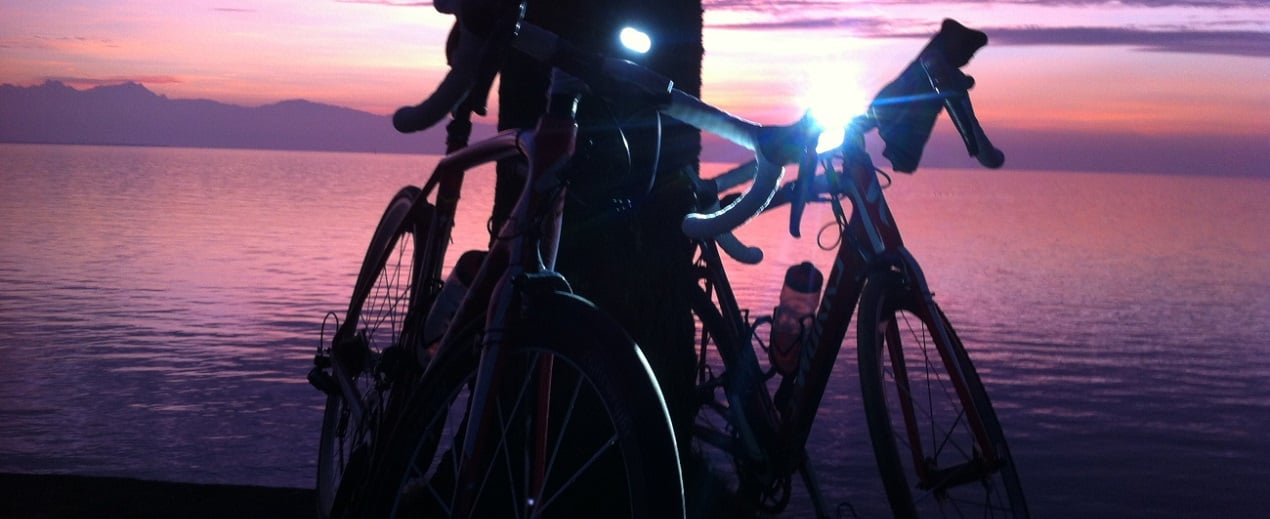What type of bike lighting is right for you?

A decent set of lights is a must for everybody who owns and rides a bicycle. Seeing and being seen are essential – wherever it is you ride – and there are bike lights available for every budget and style of cycling. Additionally, having the right lights means you can ride all year round, and who wouldn’t want that? Read on for some information on the different types of lighting available and what might suit you best.
Battery-powered & usb-rechargeable lights
The easiest type of bicycle lights to install are battery-powered or usb-chargeable lights that attach to the handlebars and seat post. These are available in a wide range of designs and from a variety of different brands. You’ll want to look for adequate battery life and brightness (measured in lumens or lux, depending on manufacturer) for your intended riding. Headlamps start at around 10 lumens and go up to thousands. A 50-lumen headlight is bright enough for most urban commuting and night riding where the main need is simply to be seen. However, if you want to commute along an extremely dark path or unlit road, you should be looking at lights with an output of at least 200 lumens. Rear lights range from around 5 to 100 lumens. Please note that older models (often battery powered) with lower output will often not be rated in lumens – you can interpret this as an indicator that they will be far less bright. If you are unsure about lighting ratings, consult the manufacturer’s website for a more detailed explanation.
Battery or USB?
Most decent modern bike lights are rechargeable, allowing you to do away with disposable alkaline batteries. Not only is this better for the environment, but cheaper and more convenient: remember, this means you can charge them from your computer and from wall sockets. Note that at the cheaper end of the market, you will see more lights that use replaceable batteries. Some very powerful front lights come with a wall adaptor and can take several hours to completely recharge, while some models even feature battery level indicators. As always, carefully read the specifications on each product page.
Dynamo Lighting
A popular and useful alternative to detachable rechargeable lights is a dynamo lighting system, powered by a dynamo hub that generates a current to power devices such as lights. If you have a dynamo hub on your bicycle, you have the option of using a mountable permanent lighting system. A dynamo lighting system is reliable, environmentally-friendly, robust and more difficult to steal. The brightness will depend on the lights and how much current your hub generates. Look at product specifications for more information on this and consult your bike’s supplied user manual for information on its dynamo hub. Many lights will put out less power with a less powerful hub. Rear lights can also be connected to your dynamo and attach either to the seat post or rear luggage rack. This setup is great for commuters as well as cyclists who do super long-distance riding where battery power would be a concern. However, many find that the weight penalty from the dynamo hub and lamps is too much to bear and prefer a detachable lighting set.
Helmet Lights
Many people want to mount a light on their head. No problem – several helmet lamps are available. These are most often usb-rechargeable lights and attach to the helmet with a special mount. Check that the mount is included when ordering and that your helmet is compatible with the light(s).
Mounts
All lights are supplied with a type of mount to attach them to the bicycle. For most front lights, this will be either a plastic mount that is tightened with a thumb screw or a plastic clasp that grips the handlebars. For heavier, more powerful lights, a sturdier mount will be supplied. Rear lights usually use in-built rubber straps or bands to attach them to the seat post.
Lighting for mountain bikes
Riding your favourite trails at night can be an absolute blast – but not without adequate lighting: you have to be even more careful of potholes, rock, roots and overhanging branches when it’s dark. For night-time off-road riding, we recommend a front light that will put out up to 1000 lumens. That may sound like a lot, but you’ll be surprised how dark the forest is in the middle of night. Lights designed for night mountain biking also spread the beam wider than others, helping you see around the trail. Serious off-roaders may want to consider combining a handlebar-mounted light with a helmet light for extra luminance.
